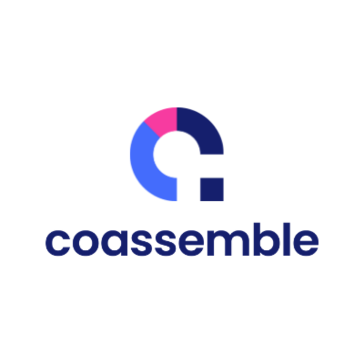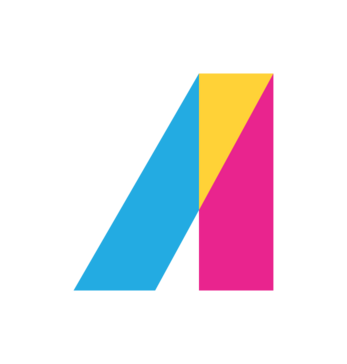No buyer guide found.
Best eLearning Software
eLearning software stands for electronic learning software, which is nothing but a platform that facilitates learning through an electronic medium. For instance, your computer. The eLearning software allows the delivery of formal education, instructions, or course content in a digital way leveraging the internet, CD-ROM, DVD, or intranet facility. With eLearning software, you are able to access the course material no matter where you are. Moreover, you ...
Show MoreeLearning software stands for electronic learning software, which is nothing but a platform that facilitates learning through an electronic medium. For instance, your computer. The eLearning software allows the delivery of formal education, instructions, or course content in a digital way leveraging the internet, CD-ROM, DVD, or intranet facility. With eLearning software, you are able to access the course material no matter where you are. Moreover, you can learn at your convenience time, which, in turn, lets you have more control over your day. Given these fundamental benefits, more and more educational institutions, as well as corporate organizations, have started embracing eLearning software in the past few years. And it is only going to increase. While there are many types of eLearning software, you should first identify your own eLearning requirements to get the right-fit platform. If you have already done that, the number and volume of diverse eLearning tools in the market may overwhelm you. To spare you from the trouble, we have curated a list of the top eLearning software to get you started.
Show LessAll Software
List of Best eLearning Software

Camtasia
Fast and Easy Video Editing Software
Camtasia is a widely used software tool for creating professional-quality videos, especially for tutorials, presentations, and training materials. It's acclaimed for its user-friendly interface, making it accessible even for those without prior video editing experience. Camtasia allows users to record their computer screens, add webcam footage, and incorporate audio, which is ideal for creating ... Read More
Available
$179.88/year
United States
SHIFT
Create, publish, manage and analyze ...
SHIFT is an innovative web-based e-learning authoring software, designed for creating engaging and interactive online courses with ease. It's user-friendly, allowing educators and trainers to build rich learning experiences without needing advanced technical skills. SHIFT offers a range of customizable templates and interactive elements, making course design both efficient and creative. Key ... Read More
7 Days
$99/month
Costa Rica

Coassemble
Your first online training platform
Coassemble is an online training tool that combines a powerful Learning Management System (LMS) with a user-friendly course authoring capability. It's designed to make creating and delivering eLearning content straightforward and engaging. Coassemble's standout feature is its intuitive drag-and-drop interface, allowing users to craft interactive courses easily without needing advanced technical ... Read More
7 Days
$7.5/month
Australia

Trainual
Employee Onboarding, SOP & Training ...
Trainual is a user-friendly and comprehensive training and onboarding software designed for businesses of all sizes. Its main purpose is to simplify the process of documenting standard operating procedures, policies, and workflows. With Trainual, companies can create interactive training manuals, organize company knowledge, and track employee progress, ensuring consistent training and knowledge ... Read More
7 Days
$249/month
United States

Udemy Business
Top Online Learning Platform
Udemy Business is an expansive learning platform tailored for organizations seeking to enhance their employees' skills and knowledge. This software offers an extensive library of over 5,000 high-quality courses covering a wide range of topics, from technology to business and personal development. These courses are designed by industry experts, ensuring up-to-date and practical content. Udemy ... Read More
7 Days
Contact Vendor
United States

Thinkific
Create, Market & Sell with the #1 Online...
Thinkific is an all-in-one online course platform designed for entrepreneurs and businesses to create, market, and sell online courses. It's user-friendly, allowing even beginners to effortlessly build courses with its drag-and-drop course builder. The software supports various multimedia formats like videos, quizzes, and surveys, enhancing the learning experience. Thinkific's key features include... Read More
14 Days
$36/month
Canada

Teachable
Sell Courses, Coaching and Digital ...
Teachable is a versatile software platform designed for creating and selling online courses and coaching services. It's known for its simplicity and intuitive interface, which makes it easy for users, regardless of technical skills, to build and launch courses. Teachable supports a variety of content formats including video, text, and PDFs, and offers features like quizzes and certificates to ... Read More
7 Days
$39/month
United States

iSpring Suite
Comprehensive eLearning Authoring Tool
iSpring Suite is a comprehensive eLearning authoring toolkit designed to make course creation simple and effective. It integrates seamlessly with PowerPoint, allowing users to transform existing presentations into engaging eLearning content. The software supports a wide range of multimedia elements like quizzes, interactive assessments, dialog simulations, and screen recordings. One of its ... Read More
14 Days
$770/year
United States

Articulate 360
The leading platform for workplace ...
Articulate 360 is a comprehensive suite of tools tailored for developing high-quality eLearning courses. It's celebrated for its user-friendly interface, making it accessible to both novices and experienced course creators. The suite includes Storyline 360, which offers advanced interactive features, and Rise 360, known for its responsive, web-based course creation. Articulate 360 supports a wide ... Read More
30 Days
$1399/year
United States

isEazy Author
Innovate with the easiest authoring tool...
isEazy Author is a cloud-based eLearning authoring tool designed for simplicity and efficiency in creating interactive online courses. Its standout feature is the intuitive, user-friendly interface, which allows users, regardless of their technical expertise, to create visually appealing and engaging course content. isEazy Author supports various multimedia formats, including videos, images, and ... Read More
7 Days
$72/month
Spain

LearnWorlds
Create and sell online courses from your...
LearnWorlds is a dynamic and user-friendly online course platform tailored for creating, selling, and promoting eLearning content. Its standout feature is the interactive video tool, which enhances learning by allowing educators to add quizzes, pop-ups, and other interactive elements directly into videos. LearnWorlds supports a variety of content formats, including eBooks, PDFs, and audio, ... Read More
30 Days
$24/month
United States

Composica
e-Learning authoring tool and course ...
Composica is a powerful web-based authoring tool for creating interactive and engaging eLearning content. Its standout feature is the collaborative approach it offers, allowing multiple team members to work together on a project in real-time. Composica supports a wide range of interactive elements like quizzes, games, and simulations, enhancing the learning experience. The platform is known for ... Read More
7 Days
$99/month
Israel

Easygenerator
All-in-one course creation tool for ...
Easygenerator is an intuitive and user-friendly eLearning authoring tool, designed for educators and businesses to create effective online learning materials. Its standout feature is the simplicity of its drag-and-drop interface, which allows users with no technical background to easily create engaging courses. Easygenerator supports various content types, including interactive elements like ... Read More
14 Days
$108/month
United Arab Emirates

Elucidat
Create Engaging Courses Faster
Elucidat is a cloud-based eLearning authoring platform known for its scalability and ease of use, especially suitable for large organizations. It enables users to create high-quality, interactive online courses without needing extensive technical skills. Elucidat's standout features include a drag-and-drop interface, making course creation simple, and a wide range of customizable templates that ... Read More
7 Days
Contact Vendor
United Arab Emirates

Gomo Learning
Creating beautiful eLearning has never ...
Gomo Learning is a cloud-based eLearning authoring tool that stands out for its ease of use and focus on collaborative course creation. It allows teams to design, develop, and deliver interactive and responsive online courses seamlessly. Gomo Learning’s drag-and-drop interface makes it simple to build engaging learning content, even for those without technical expertise. The platform supports ... Read More
7 Days
Contact Vendor
United Kingdom

Lectora
The most powerful eLearning authoring ...
Lectora is a robust eLearning authoring tool recognized for its advanced capabilities in creating interactive and accessible online courses. It is particularly favored by professionals for its comprehensive range of features that cater to detailed and complex course designs. Lectora allows for the integration of various multimedia elements like videos, animations, and audio, enhancing the learner'... Read More
7 Days
Contact Vendor
United States

7taps Microlearning
Create impactful microlearning in ...
7taps Microlearning is a user-friendly software designed to enhance learning experiences. With its intuitive interface, it empowers organizations to deliver bite-sized lessons that promote knowledge retention. This tool's standout feature is its versatility, allowing you to create, manage, and track microlearning modules effortlessly. It offers interactive quizzes, videos, and assessments, making ... Read More
14 Days
$84/month
United States

Absorb LMS
Discover a powerful learning management ...
Absorb LMS is a comprehensive learning management system (LMS) designed to facilitate online training and education for businesses and educational institutions. Known for its user-friendly interface, Absorb LMS allows for the easy creation, management, and tracking of online courses and training programs. Key features include a customizable dashboard, advanced reporting capabilities, and an ... Read More
7 Days
Contact Vendor
United States

SkyPrep
Online Training Software & Award-Winning...
SkyPrep is a user-friendly software solution designed to simplify the management of training and learning programs. With its intuitive interface, it allows organizations to effortlessly create, deliver, and track online courses. One standout feature is its flexibility, enabling customization of courses with various content types like videos, quizzes, and documents. SkyPrep also offers detailed ... Read More
7 Days
Contact Vendor
United States

360Learning
The first comprehensive learning ...
360Learning is a dynamic e-learning platform designed to make learning engaging and collaborative. Unlike traditional learning management systems, it emphasizes a user-friendly approach, ensuring that both trainers and learners find it easy to navigate. Its standout feature is the emphasis on peer learning and interaction, fostering a community-driven learning environment. Course creation is ... Read More
30 Days
$8/month
United States

Litmos
Deliver training anytime anywhere across...
Litmos is a user-friendly software that makes learning and training a breeze. It's perfect for businesses and organizations looking to educate their teams efficiently. With Litmos, you can create and manage courses effortlessly, ensuring your employees have access to essential knowledge. The platform offers a variety of customizable features, from interactive quizzes to progress tracking, making ... Read More
N/A
Contact Vendor
United States

Tovuti LMS
Create Courses, Engage Learners & Train ...
Tovuti LMS is a comprehensive cloud-based learning management system designed to facilitate the creation, delivery, and tracking of online training and educational courses. Distinguished by its user-friendly interface, Tovuti LMS caters to both course creators and learners, offering a seamless and interactive learning experience. It features a robust course builder with interactive elements like ... Read More
N/A
Contact Vendor
United States

Canvas LMS
The world's #1 LMS Learning Management ...
Canvas LMS is a robust, user-friendly learning management system widely adopted in educational institutions. Its core strength lies in facilitating a seamless online learning environment. Canvas enables educators to create and manage digital courses with ease, offering tools for content delivery, assignment distribution, and feedback. A key feature is its intuitive, customizable interface, which ... Read More
N/A
Contact Vendor
United States

H5P
Create and Share Rich HTML5 Content and ...
H5P is a versatile, web-based software designed to create, share, and reuse interactive content, making learning more engaging. It's user-friendly, requires no programming skills, and integrates easily with major learning management systems (LMS). H5P offers a wide variety of content types, including interactive videos, quizzes, and presentations, allowing educators and content creators to craft ... Read More
N/A
Contact Vendor
United States

TalentCards
Best Mobile Learning Platform
TalentCards is a mobile-first learning platform designed for the modern workforce. It specializes in microlearning, breaking down complex training material into bite-sized, easily digestible content, perfect for on-the-go learning. The app's user-friendly interface allows for the creation of digital flashcards, which can include text, images, and audio, making learning interactive and engaging. ... Read More
7 Days
$50/month
United States